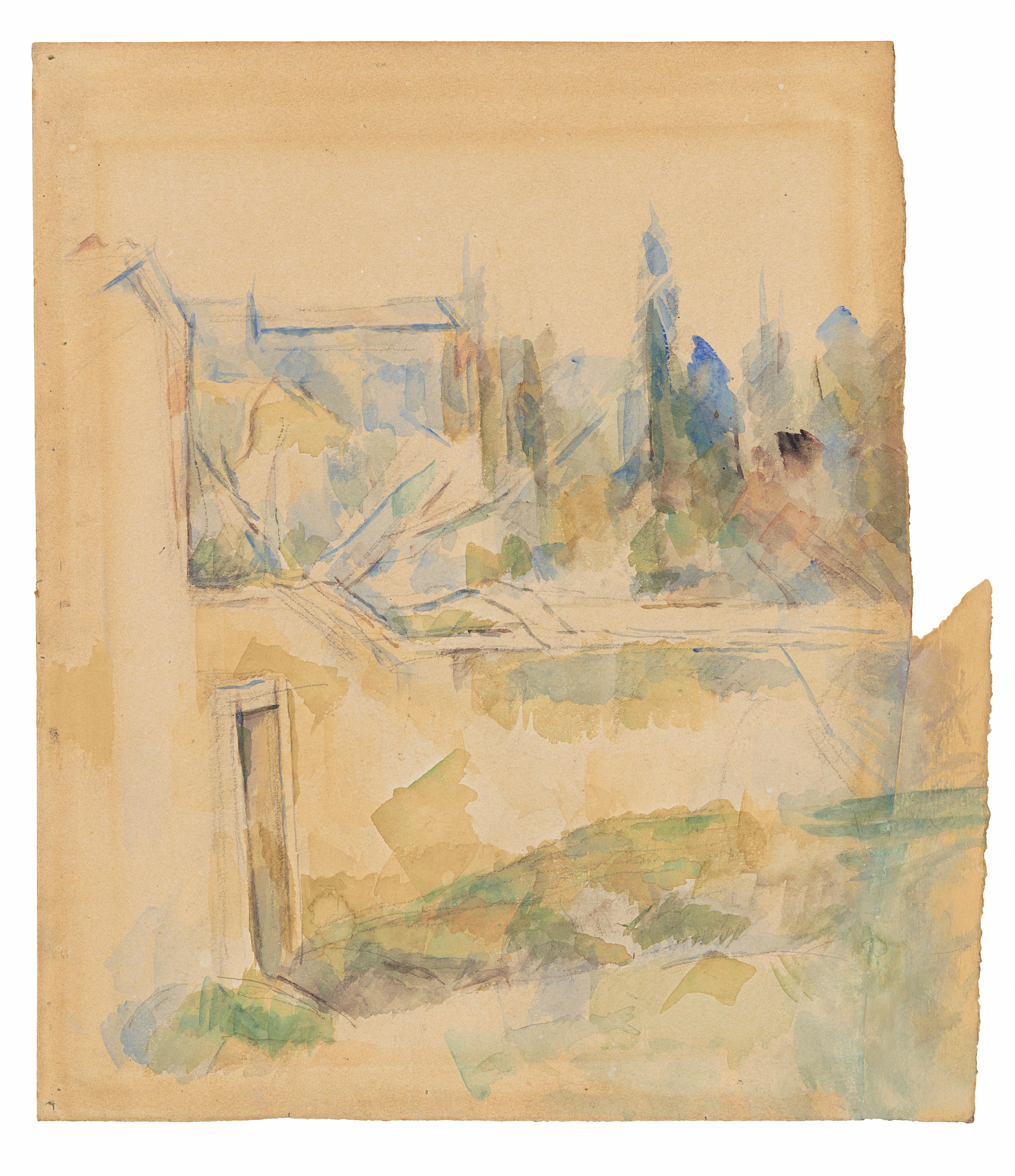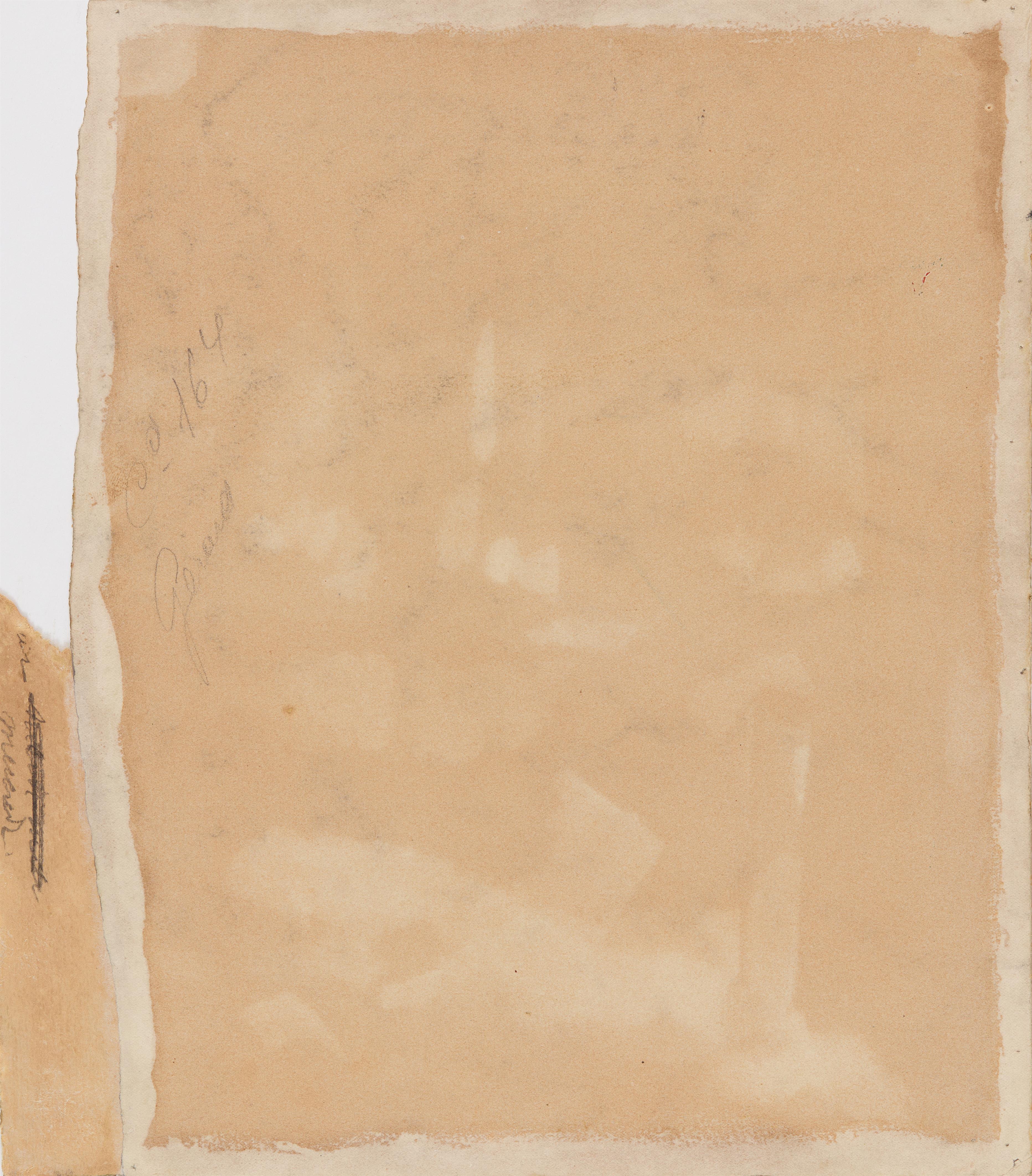Paul Cezanne
Entrée de maison et arbres
1895-1900
Watercolour and graphite on wove paper. 31.4 x 25/27.2 cm. Framed under glass. Unsigned. Inscribed indistinctly "no. 164 Gerard" in pencil verso.
When Paul Cezanne created this enchanting watercolour landscape, he was probably in the countryside of the Île-de-France or already in his adopted homeland of Provence. Even at an advanced age he loved to hike through the landscapes around Aix-en-Provence to capture seemingly accidental views of them. Here, lines delicately drawn in pencil form a framework to which the watercolours have been attached in mostly parallel patches of blue, grey and green. Within this reduced range of colours, these convey the idea of a house’s elongated wall, which contains a door in dark shadows and trees – some of them tall – as well as the outline of a building behind it. This is consistent with Cezanne’s tendency to use architectonic elements to restrict our view of an expansive landscape space and to link the nearby with the distant. His deft composition introduces diagonal elements for this purpose: here the extending branches draw our gaze into the distance. In terms of subject matter, the watercolour belongs to a group of works on paper which link wooded landscapes with selected architectural elements, thus harmonising right-angled and vegetable forms.
Watercolours occupy an important place in Cezanne’s oeuvre. From around 1885 their influence on his oil painting is not to be underestimated and, on the other hand, he especially transferred his use of the watercolour technique to the creation of landscape images. After initially painting mostly wet in wet, he later transitioned to painting with superimposed colours featuring mutually overlapping areas. Over time he also began to allow the white ground of the paper to remain so that he could deliberately incorporate it into his compositions.
According to the authors of Cezanne’s catalogue raisonné, this watercolour sheet represents not a fragment but a standard format of drawing paper (31 x 24 cm) often used by Cezanne. As in the case of the 1900 watercolour “Pistachier dans la cour de Château Noir I” (no. 1449), it is assumed that he supplemented the sheet with a small strip of paper during the painting process to enable himself to extend the wall and strip of greenery. The watercolour loses none of its magic on account of this – on the contrary, this lends it greater authenticity. Accordingly this work, which has long been in private hands, was just recently added to his catalogue raisonné. Watercolours by Cezanne are extremely rare on the German art market.
Catalogue Raisonné
FWN 1539
Certificate
We would like to thank Walter Feilchenfeldt, Jayne Warman, David Nash and Fabienne Ruppen for kind confirmatory and additional information.
Provenance
Former private collection, Rhineland; thenceforth in family property
Literature
Walter Feilchenfeldt, Jayne Warman and David Nash, The Paintings, Watercolors and Drawings of Paul Cezanne: An Online Catalogue Raisonné (www.cezannecatalogue.com), no. FWN 1539 (with col.ill.)




